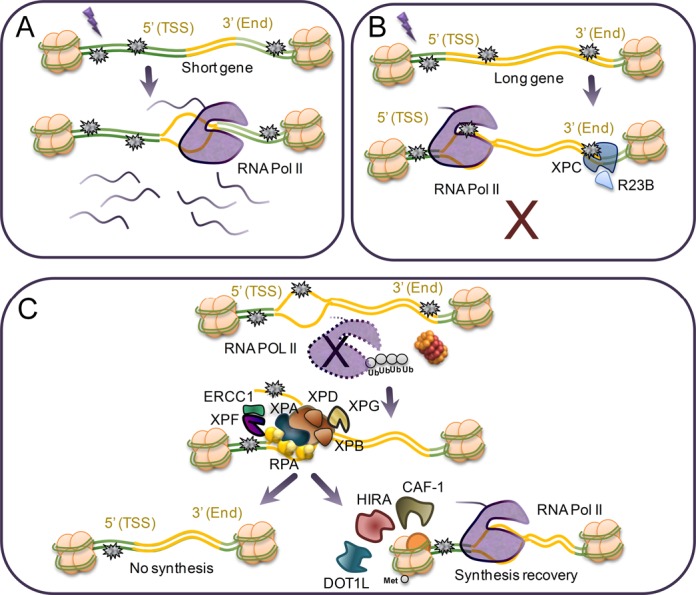Figure 7.

Model of transcription recovery following irradiation with UVC light. (A) Short genes are less likely to suffer DNA damage and thus transcription is less inhibited in these genes compared to larger genes. (B) The induction of DNA damage and the resulting inhibition of transcription elongation are proportional to gene length. GG-NER (XPC protein) contributes to the recovery of transcription in long genes by removal of DNA lesions in the 3′-end of these genes. (C) The arrested RNAPII needs to be backed up or removed from the site of the blocking DNA lesion to allow access to the NER factors. Since the recovery of RNA synthesis appears to be a process that occurs in a 5′-3′ direction, it is plausible that the blocked RNAPII is released or targeted for degradation. Removal of transcription-blocking lesions was faster in the 5′-ends of genes compared to the 3′-ends of large genes. RNA synthesis did not recover in certain genes (SLIT2) despite showing proficient removal of UV-lesions. Thus, factors such as HIRA, CAF-1 and DOT1L, may be needed for efficient re-start of RNA synthesis following repair of UV-induced damage.
